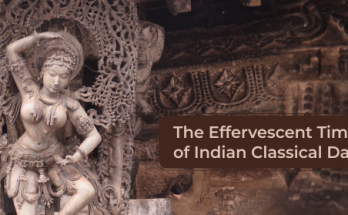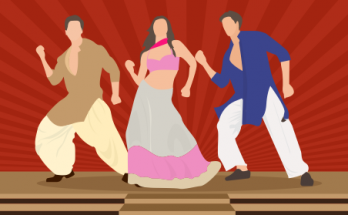From the first Bollywood film to the remake of Coolie No. 1 remake in 2020,
Bollywood films have undergone a massive change. From showing two flowers touching each other to depict sex to complete and/or partial nudity and sex scenes, one can map the change in society via films alone.
But one thing that has pretty much remained a constant, is the beloved song and dance routines.
Although, there was a moment in Indian cinema, post-2005 when the incredibly loud and flashy song and dance routine was toned down to make way for a subtle film viewing experience owing to the emergence of art cinema. Even then, when this new trend was being picked up from international noir cinema, Indian cinema couldn’t completely copy the pattern as was; Bollywood Musician couldn’t stay away from Indian Film Music for too long.
The 2010s was the decade when films slowly tried to move away from music. While some directors decided to cut down the dance, drama and flash from movies, even going so far as using music as a narrative device instead of as an interlude (Aanand L. Rai’s 2013 Romantic Drama Ranjhanaa achieved this perfectly), some directors decided to chuck music completely, at least during the plot. (A perfect example was Neeraj Pandey’s BABY).
But ever since India’s internet usage boom, thanks to telecom companies’ cheap internet plans, there has been rising popularity in great music from the subcontinent. Thanks to cheap internet, people are able to stream music for longer, not just within the country but from all over the world, and are in a better position to compare different music. A sense of national pride is also driving the desire to revisit old songs, and select good original music from them. Indian Music Producers nowadays are just picking good music from the past decades, and readjusting them with modern musical sensibilities.
All this, in combination with 90s nostalgia of the millennials, has led to the rise in popularity of 90’s and 2000s songs. This, in turn, has revived the flashy song and dance routine of Bollywood films. In fact, the song and dances have turned more flashy, dramatic and of course, colourful than before.
So, what is it about this innate Bollywood flashy, dramatic, song and dance routine that these movies just can’t seem to stay away from?
Regaling Emotions with music
Indian audiences love it when characters’ emotions are sung rather than told or left up to the viewer’s imagination. Songs actually increase the emotion attached to the scene, thereby increasing its impact on the audience. It is exactly the reason why we have been watching the Ramleela for centuries now. For example, in the song ‘Aajkal Zindagi’, the transition that Ranbir Kapoor’s character goes through when he gets a job and starts becoming independent, has much more impact on viewers than if it were told without music.
The fast pace of the track in the middle shows how he learns to work in a fast-paced office environment. The background tune in the scene when he explores the markets of Mumbai for his photography tells us how he is getting inspired, trying to push the boundaries of his natural talent.
Clarifying Emotions
Sometimes, in dramatic Hollywood movies, many times we just watch a character going through a certain dilemma or emotion, without fully comprehending what they must be going through. It is natural, since we’re all different people, and may not always relate to a certain character. In fact, long, drawn-out scenes like this can get boring a lot. (Netflix’s ‘The Crown’ comes specifically to mind). But such a tragedy never occurs in scenes accompanied by background music. Remember the ‘Maa’ song from ‘Taare Zameen Par’?
The lyrics of this song is so powerful that we cry every time we watch or even hear this song?
Imagine if this sequence had no song, no background music….would we cry the way we do usually? Of course not. It would be yet another ‘The Crown’ scene- tragic, yes! Tearful, No!
The music makes all the difference. It is the lyrics, the lyrics that tell us what exactly he might be thinking when his parents leave him at boarding school. The music made it easy for us to relate with him. And relate like how? Although we were not dyslexic and were never at boarding school, and yet we understood. Every time we hear this song, we become kids again, don’t we?
Soul of Cinema
In Indian movies, music has moved up, to actually become the soul of a film. We cannot imagine a film without music now, not at all. The songs give us something to look forward to in a film. When the film ‘Ye Jawani Hai Deewani’ was about to be released, for instance. There was so much anticipation because of the songs alone. ‘Badtameez Dil’, ‘Balam Pichkari’….these songs gave us some major Dharma entertainer Deja Vu.
Imagine if ‘Ye Jawani Hai Deewani’ had no songs? It would literally feel like the living corpse of a film.
Songs bring some animation, some life to a film. Especially if its an A. R. Rehman or Amitabh Bhattacharya produced music.
And Of Course, An Excuse to Dance
Indians love to dance…That is perhaps the biggest reason why Indian films have music. That is the whole reason songs had been introduced in movies since the days of ‘Alam Ara’, and has remained the reason for the enduring legacy of the Bollywood song, continuing until today, right up to the remake of Coolie No. 1.
A living testament is Youtube- Just see how Youtube has been flooded with independent dancers all around the world, dancing to the beats of one or the other Hindi song.








